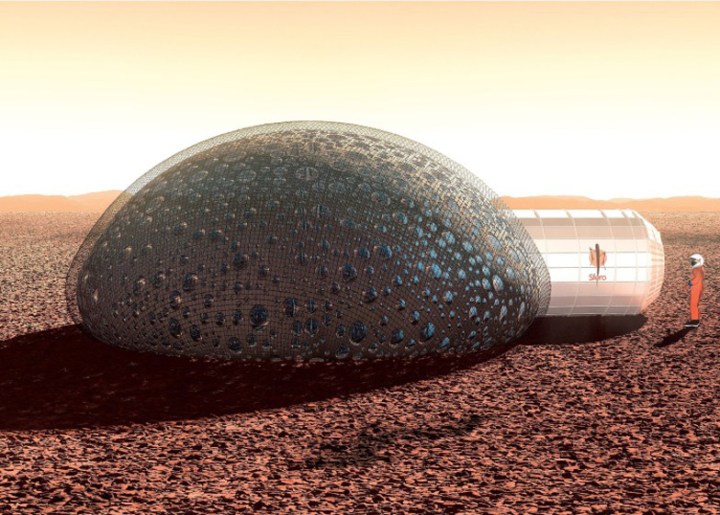
Though the competition required these firms to be located in the United States, a French company named Fabulous decided to forgo this stipulation and arguably just submitted one of the contest’s most intriguing ideas.
Fabulous’ plan, which NASA has yet to announce whether it will consider, calls for the construction of a multi-level bubble home that’s fully 3D-printed using only Martian soil as the raw material. The design intends to make use of Mars’ iron oxide-rich soil to assist in creating a structure which resists the planet’s low atmospheric density. Moreover, Fabulous also plans to make use of the planet’s abundance of permafrost to create an exterior water pocket that will defend the structure from solar radiation.
Construction of Fabulous’ bubble home would begin by drilling a large central pillar — outfitted with two robotic arms — into the planet’s terrain. Once drilling ends, the robotic arms will then set out to harvest the necessary iron oxide and permafrost before beginning to assemble the structure. With the raw materials in hand, or in robotic hands, a laser will then be used to 3D-print the two-story habitat layer by layer. Fabulous intends the printer to build a two-story structure with the top floor serving as a workspace and indoor garden, while the bottom floor contains a future crew’s sleeping quarters.
To test its design, Fabulous intends to travel to both Hawaii and the Mojave Desert in California, attracted by these two region’s similar soil composition. If all goes according to plan, the French company has pinpointed Mars’ Gale crater as the best possible spot to construct the habitat given the area’s richness of iron oxide and likely presence of water. And if testing of this idea shows as much promise in real life as it does on paper, Fabulous may receive a nice phone call from NASA regarding these bubble homes very soon.



